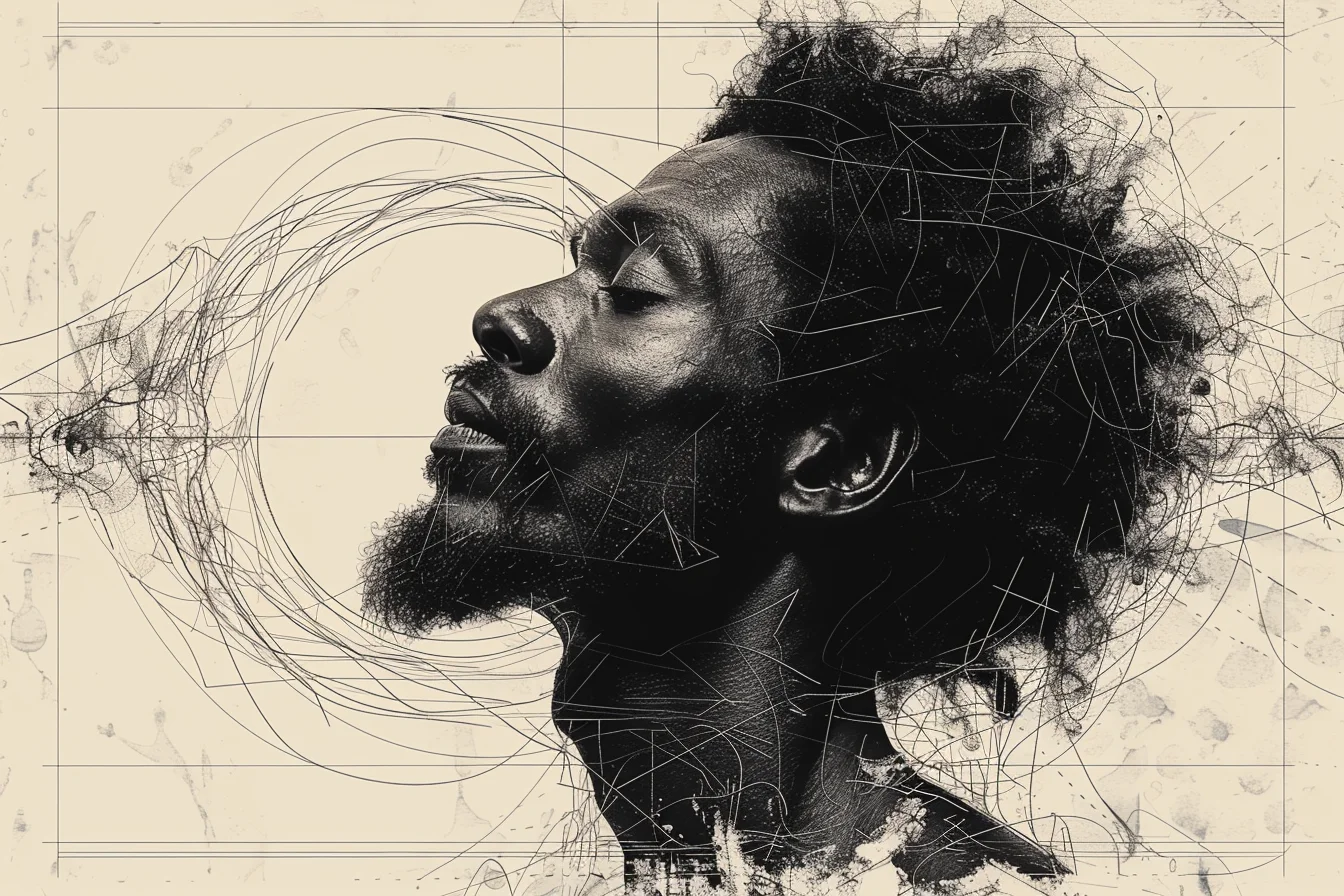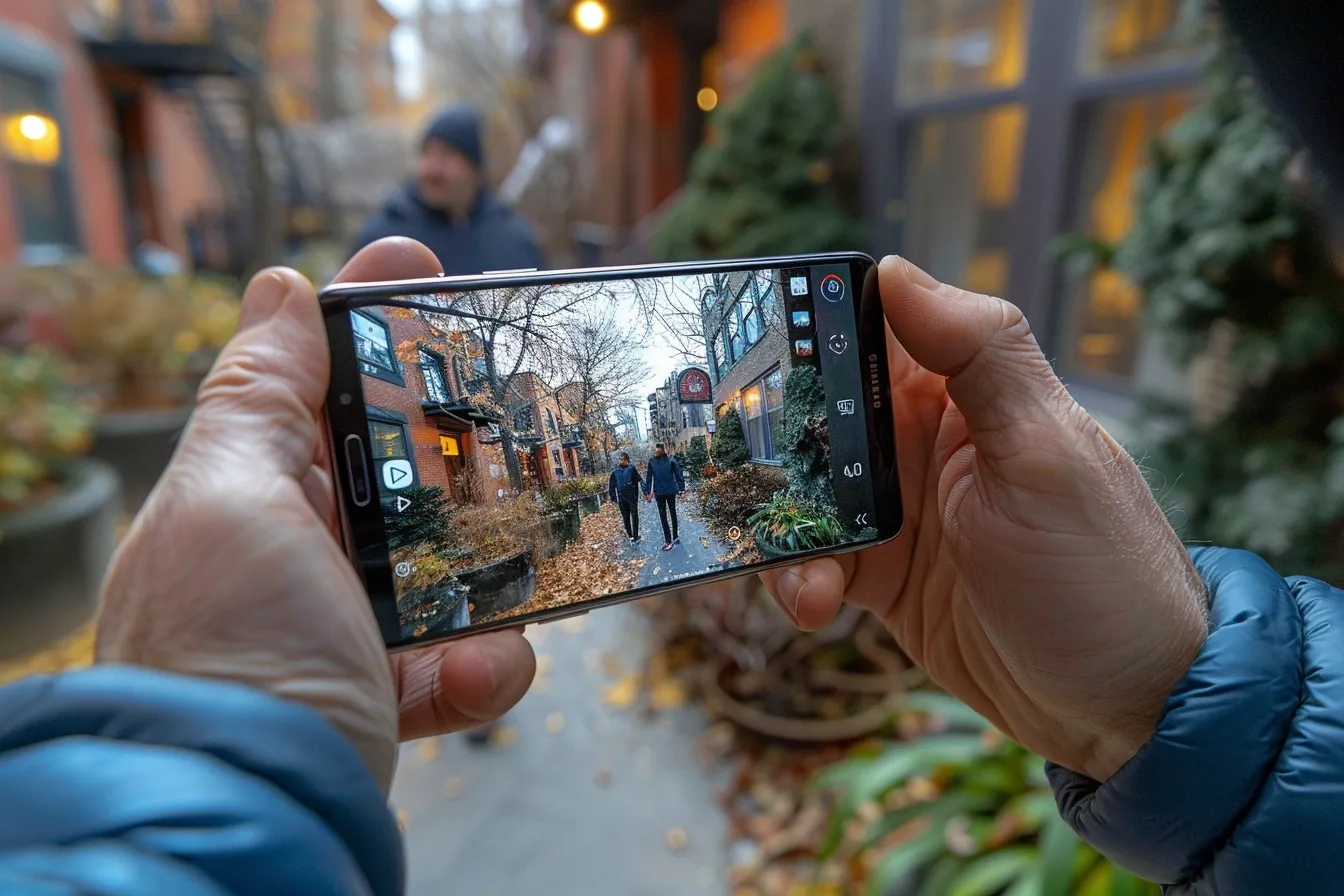Storytelling has emerged as a crucial technique for organizations looking to establish a deeper connection with consumers in today’s crowded market. Strong storytelling encourages brand loyalty and engagement by grabbing the audience’s interest and leaving a lasting impression. The following eight techniques will help you improve your brand strategy:

1. Emotional Storytelling
Using human emotions to your advantage, emotional storytelling is a potent approach that helps you establish a strong, long-lasting bond with your audience. Emotions like happiness, grief, nostalgia, empathy, or inspiration can be tapped into by companies to elicit powerful emotions that connect with customers on a human level.
Why it Works: Decision-making is heavily influenced by emotions. People are more inclined to become brand loyal, promote a brand, and interact with its goods and services when they have an emotional connection to it. Through emotional storytelling, brands can create a real, meaningful connection with their audience by cutting through the clutter of traditional advertising.
Explore more the power of emotional branding:
Example:
- The “Real Beauty” commercial by Dove is a moving illustration of an emotive narrative. Through showcasing the diversity and inherent beauty of women of all shapes, sizes, ages, and races, the campaign questions conventional notions of beauty. Dove showcases real tales and experiences, touching on themes of empowerment, body acceptance, and self-esteem through impactful films and commercials. Dove’s campaign strikes a deep emotional chord with consumers by promoting feelings of inclusivity and self-acceptance, strengthening the relationship between the company and its target market.
- Google’s “Dear Sophie” ad serves as another example. It narrates the touching tale of a father who uses Google products to record his daughter’s life, from the moment of her birth to her first steps and beyond. The advertisement appeals to viewers’ feelings of love, nostalgia, and time passing while demonstrating how Google products help to record and preserve life’s special events.
One can say that by appealing to the emotions of their audience, marketers may establish genuine connections with them through emotional storytelling. Brands can establish a strong emotional connection with consumers that goes beyond conventional marketing strategies by telling stories that genuinely inspire emotions and experiences.
2. Character Development
Whether your characters are made up or based on actual people, create relevant characters for your brand story. These personalities ought to represent your brand ideals and operate as ambassadors who connect with your intended audience. Brands may humanize their narrative and establish a deep emotional bond with customers by creating compelling and real characters.
Why it Works: Characters give audiences a point of connection and are the lifeblood of your brand narrative. A brand’s emotional investment increases when viewers can relate to and empathize with its characters. Characters make your brand story more interesting and memorable by giving it depth, charisma, and relatability.
Example:
- The “Belong Anywhere” campaign from Airbnb is a perfect example of how character development can be used in brand narrative. Real-life accounts from Airbnb hosts and guests from all over the world are included in the campaign, highlighting the variety and singular experiences people have on the platform. Viewers are introduced to a variety of individuals in each narrative, including the hosts, visitors, and villages they visit, all of whom share their unique experiences, struggles, and touching moments. Airbnb crafts a powerful narrative that connects with people and reaffirms its core values of inclusivity, hospitality, and cross-cultural exchange by emphasizing the human stories that underpin the brand.
- Coca-Cola’s recognizable polar bear figures are another example. Over the years, these endearing cartoon bears have appeared in several Coca-Cola commercials and promotions, eventually coming to represent the brand’s themes of happiness, community, and refreshment. The polar bear characters have become cherished icons of the Coca-Cola brand thanks to their endearing interactions and humorous antics that have grabbed the hearts of viewers all over the world.
Hence, character development is an effective narrative strategy that gives companies a human face and helps viewers connect on an emotional level. Brands can create tales that emotionally resonate and make a lasting impact by creating sympathetic characters that represent the experiences and beliefs of their target audience.

3. Conflict and Resolution
To build suspense and keep your audience interested, include conflict or problems in your brand narrative. Emphasize how your brand assists in overcoming these challenges to produce a satisfactory result that exemplifies the value proposition of your brand. Brands can craft a captivating story arc that captivates viewers and keeps them committed to the conclusion by integrating conflict and resolve.
Why it Works: Your brand story gains depth and tension when there is conflict; this moves the story along and draws in the audience. When viewers witness characters overcoming difficulties, they are emotionally invested in the solution and want to see the characters succeed. The closure is given by the resolution, which also serves to reaffirm the brand’s message by showing how it can meet client wants and resolve issues.
Example:
- One of the best examples of conflict and resolution in brand storytelling is the Nike “Just Do It” campaign. Real-life tales of sportsmen succeeding against all circumstances, pushing themselves to the edge, and conquering obstacles are featured in the campaign. Every narrative emphasizes the challenges, disappointments, and hardships that the athletes have faced—from defeats and injuries to criticism and self-doubt. Nevertheless, the athletes succeed and accomplish their objectives in the end thanks to their tenacity, resolve, and the assistance of Nike goods. The resolution upholds Nike’s philosophy of empowerment, resiliency, and “Just Do It,” encouraging viewers to reach their goals and overcome personal obstacles.
- Apple’s “1984” commercial, which was notably shown during the Super Bowl, is another illustration. In the commercial, a Big Brother-like person on a massive screen represents a dystopian society ruled by oppression and conformity. A defiant young lady rebels against the throng and throws a sledgehammer at the screen in the middle of this desolate scene, signifying the empowerment and freedom that come with adopting an alternative perspective. The commercial’s resolve positions Apple as a supporter of freedom and innovation by showcasing the Macintosh computer as a ground-breaking tool for creativity and independent expression.
Based on famous examples of Nike and Apple, it is evident that using conflict and resolution in your brand narrative is an effective storytelling approach that builds suspense, emotional connection, and a sense of victory. You can effectively explain your value proposition and make a lasting impression on your audience by demonstrating how your brand helps overcome obstacles and achieve positive outcomes.

4. Authenticity and Transparency
Genuineness, honesty, and openness are key components of authenticity and transparency in storytelling when it comes to expressing your brand’s experiences, values, and beliefs. Over time, better relationships and loyalty can be fostered by brands that embrace authenticity and transparency to develop trust, credibility, and emotional connections with their audience.
Learn the tactics to increase customer loyalty:
Why it Works: Consumers want authenticity and transparency from the businesses they support in an era of skepticism and information overload. Brands are humanized and show a dedication to honesty and integrity when they are open and honest about their beliefs, procedures, and even their flaws. By connecting with consumers on a deeper level and appealing to their values and beliefs, authentic storytelling helps brands develop a feeling of authenticity that inspires loyalty and trust.
Example:
- Patagonia’s “Don’t Buy This Jacket” campaign, which debuted on Black Friday in 2011, is one noteworthy instance. In addition to encouraging people to repair, reuse, and recycle existing clothing rather than purchasing new ones, the campaign asked consumers to think about how their purchases might affect the environment. Resonating with environmentally sensitive consumers and strengthening its brand values, Patagonia showed its dedication to authenticity, transparency, and environmental stewardship by publicly opposing consumerism and promoting sustainable practices.
- Another instance is Airbnb’s handling of a contentious 2016 event in which allegations of racial prejudice against visitors surfaced. In retaliation, Airbnb started the “We Accept” campaign, which showcases tales of diversity and inclusivity from hosts and visitors worldwide. The ad recognized the problem of prejudice on Airbnb’s platform and highlighted the company’s dedication to fostering an inclusive community for people of all backgrounds and races. Airbnb showed openness and sincerity by confronting the problem and restating its core principles of inclusivity and belonging. This helped to regain the audience’s trust and strengthen the company’s identity. Thus, genuineness and openness are critical storytelling strategies that help companies establish credibility, trust, and emotional bonds with their target market. Through transparently disclosing their principles, convictions, and life stories, companies can craft an honest and real story that connects with customers and builds enduring bonds.

Explore factors that evoke emotions in branding:
5. Storytelling Formats
The different methods that brands can deliver their story to their audience are referred to as storytelling formats. Various storytelling formats offer distinctive chances to highlight the influence of your business, establish a connection with your audience, and increase engagement. These opportunities range from case studies and testimonials to user-generated content and immersive experiences.
Why it Works: When it comes to content consumption, different audiences have varied tastes. Brands can reach consumers across multiple platforms and channels and accommodate a wide range of tastes by utilizing a diversified range of narrative formats. Whether it’s the emotional relevance of testimonials, the veracity of case studies, or the authenticity of user-generated material, each format has its benefits. Brands may develop a multifaceted brand narrative that connects with their audience and encourages meaningful participation by experimenting with various formats.
Example:
- Red Bull has mastered the use of a variety of narrative techniques to captivate viewers and uphold the company’s reputation as an authority on extreme sports and adventure. The brand creates a variety of content formats, such as documentaries, videos, essays, and social media postings, all around the themes of adrenaline, athleticism, and adventure through its content platform, Red Bull Media House. An instance of this can be found in Red Bull’s “Stratos” campaign, which captured Austrian skydiver Felix Baumgartner’s world record-breaking descent from space. The campaign featured interviews with Baumgartner, a live feed of the event, behind-the-scenes video, and interactive features that let spectators follow his development in real time. Red Bull’s brand narrative of pushing human potential was reinforced and millions of people around the world were captivated by the brand experience it generated, which was made possible by utilizing various storytelling mediums such as video, live streaming, and interactive material.
- GoPro’s approach to user-generated content, which invites users to share their journeys and experiences shot using GoPro cameras, is another illustration. To celebrate the originality, fervor, and authenticity of its community, the brand curates and features user-generated material on its website, social media accounts, and advertising campaigns. Adventurers and outdoor enthusiasts connect with GoPro’s realistic and authentic brand narrative because it highlights real customer stories and experiences.
It is clear from the above-mentioned points that storytelling formats give brands a flexible arsenal for interacting with their audience and presenting their story. Brands can build a dynamic, multi-dimensional brand experience that connects with their audience and encourages meaningful participation by utilizing a range of formats.

6. Visual Storytelling
Using pictures, films, graphics, and other visual elements, visual storytelling is a potent tool that can explain a brand’s story and elicit strong feelings from viewers. Through the integration of captivating graphics into their narratives, brands can effectively engage their audience, communicate intricate concepts with greater impact, and provide a lasting brand experience.
Learn the art of storytelling through aesthetics:
Why it Works: Human emotions and cognition are greatly influenced by visuals. Studies reveal that visual information is processed more quickly and retained more effectively than text-only information. By utilizing this natural predilection for images, visual storytelling helps brands to convey their message more effectively and captivatingly. Visuals may also arouse powerful emotions, which makes them a powerful tool for establishing a deeper connection and making an impression on viewers.
Example:
- Especially in terms of photography, National Geographic is well known for its breathtaking visual storytelling. The magazine’s recognizable images depict amazing wildlife, landscapes, and civilizations from all around the world, sending readers to far-off locations and drawing them into the narratives. In addition to informing and educating, National Geographic’s visual narrative stimulates empathy, wonder, and curiosity about the world we live in.
- Apple does a great job at presenting stories visually, especially when it comes to product introductions and marketing efforts. Simple, inventive, and elegant are the brand qualities that Apple promotes through its visual storytelling, which includes elegant product films and understated commercials. The business establishes an aspirational brand image that connects with customers and upholds its position as a pioneer in technology and design using simple design, excellent photography, and captivating images.
So, marketers may effectively communicate their message, elicit strong feelings, and engage their audience by using visual storytelling. Brands may tell captivating stories that captivate audiences and deepen their bonds with them by utilizing the power of images.

7. Encourage Interaction and Engagement
Encouraging your audience to take an active role in your brand’s narrative entails encouraging interaction and engagement. To foster a feeling of community, empower their audience, and strengthen their relationship with them, brands can conduct interactive campaigns, encourage user-generated content, or ask for feedback and testimonials.
Why it Works: Developing deep connections with your audience requires interaction and engagement. Audiences become more emotionally invested and attached to your brand when they perceive themselves as active participants in your brand story. Brands can cultivate a feeling of ownership and belonging among their audience by offering opportunities for engagement and connection. This can lead to increased loyalty, advocacy, and word-of-mouth promotion.
Example
- Starbucks is well-known for its impactful customer engagement initiatives, such as the yearly “Red Cup Contest” that takes place around the holidays. Starbucks is encouraging customers to use a specific hashtag when posting images of their festive Christmas cups on social media as part of this campaign. By allowing consumers to show off their creativity and take part in the campaign, Starbucks creates user-generated content while simultaneously building a sense of community and festive cheer around its brand.
- Lego through its fan and enthusiast community-building initiatives, such as the LEGO Ideas platform, has established a strong fan base. Fans can submit their concepts for new LEGO sets via LEGO Ideas, and the community can then vote on them. A proposal might be considered for production by LEGO if it garners sufficient support. Through this engagement platform, LEGO aficionados worldwide are encouraged to collaborate, be creative, and feel a sense of community in addition to being able to contribute to the brand’s product development.
Therefore, encouraging interaction and engagement is a potent storytelling strategy that enables brands to include their target audience in their brand story. Through offering chances for engagement, brands may foster a sense of belonging, empowerment, and community within their target audience, fostering advocacy and loyalty.
Know the role of customer feedback:

8. Interactive Storytelling
Engaging your audience as active players in the story and giving them the ability to influence the plot through their decisions, deeds, or feedback is known as interactive storytelling. Brands can increase audience engagement, create a feeling of immersion, and customize the storytelling experience by implementing interactive elements.
Why it Works: By allowing viewers to participate in the storytelling process, interactive storytelling encourages a stronger sense of emotional connection and engagement with the narrative. Brands may offer a more customized and captivating experience that appeals to individual preferences and interests by giving audiences the option to choose or engage with the material. In addition to promoting involvement, investigation, and discovery, interactive storytelling enhances the impact and memorability of the narrative experience.
Example
- “Bandersnatch” on Netflix: “Bandersnatch” is an interactive movie that was made available on Netflix as a part of the “Black Mirror” series. The movie centers on a young programmer who, while creating a choose-your-own-adventure video game, starts to doubt reality. At several moments in the narrative, viewers are given options, such as selecting the protagonist’s course of action or selecting crucial choices that affect how the tale ends. Viewers can explore many narratives and consequences depending on their choices, as each choice leads to a variety of branching routes and alternative ends. The immersive interactive experience and inventive storytelling technique of “Bandersnatch” won a lot of praise and showed the promise of interactive storytelling in the digital age.
- Burger King’s “Whopper Sacrifice” campaign is an illustration of interactive storytelling implemented with social media. In return for removing ten friends from their friend list on Facebook, a complimentary Whopper burger was offered to participants in the campaign. Users’ acts, which included sacrificing their friendships, were publicized on Facebook, generating discussion, and creating a buzz among internet users. The campaign demonstrated the ability of interactive storytelling to increase engagement and brand recognition by including consumers in an interactive experience while simultaneously garnering viral attention and press for Burger King.

To summarize, interactive storytelling enables companies to involve their target audience as active participants in the story, producing personalized and immersive experiences that enhance engagement and appeal to unique interests and preferences. Brands can stand out in a congested digital market, fascinate viewers, and encourage participation by fusing interactive components into their stories.
Brands can stand out from the competition, connect with their audience, and foster loyalty by using these storytelling techniques in their brand strategy. These tactics also help brands create immersive, unforgettable experiences. In the end, good storytelling is about crafting a narrative that enthralls, motivates, and has a lasting impression on your audience—not just about getting your point out.



